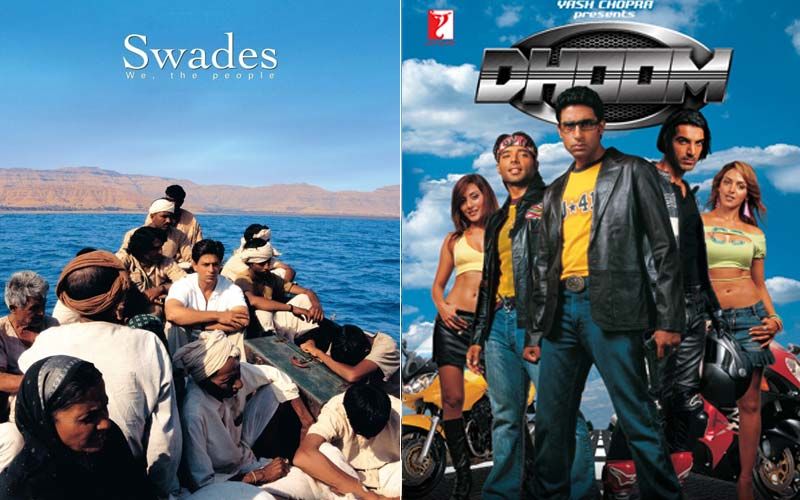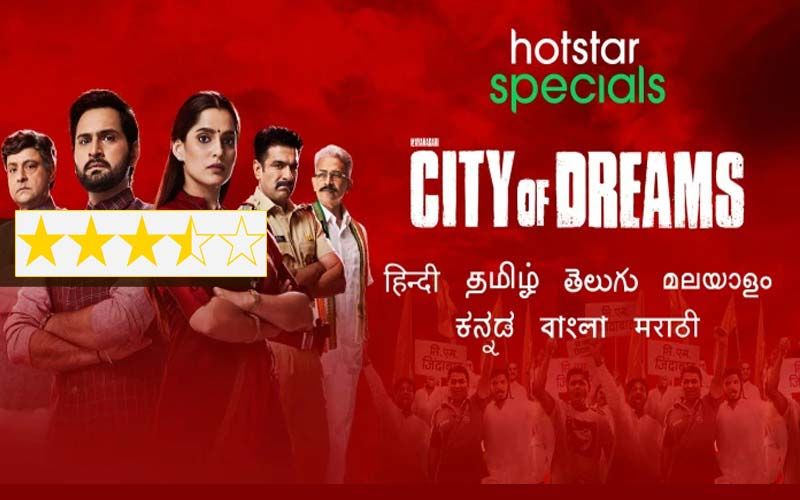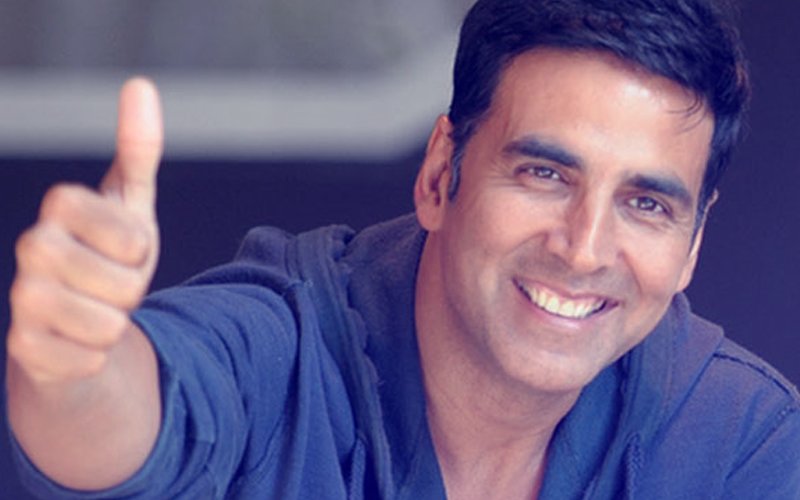Swades, Dhoom: 2 Feel-Good Films To Watch While You’re Under Lockdown Due To COVID-19- PART 5
We are back once again with a list of feel-good films that you can watch while you’re stuck at home during the lockdown. Check them out below

1. Swades (2004): This is a unique experiment with grassroot realism. It is so politically correct in its propagandist message that initially you wonder if the government of India funded the director’s dream. But no. This neo-classic, conceived and designed as the Great Indian Journey into the heart and soul of poverty , is funded entirely by Gowariker’s over-weening idealism, his sincere desire to define his purpose and function as a creative artiste and his determination to alchemize his angry social conscience into a work that’s as simple lucid and lyrical as a tune sung in repose by that minstrel singer who sings not because he must but because he knows no other thing to do. There’s an enchanting intimacy to Swades that invites you in without trying. The plot is so ‘obvious’ you wonder why an ambitious commercial behemoth like Gowariker would want to make a film about a young highly successful NRI’s rediscovery of his roots! Once the director sets off on this picaresque journey of self- discovery with his protagonist he doesn’t flinch from the sheer exoticism and transparency of his familiar yet fascinating tale .
Often in this long and finally deeply fulfilling journey you wonder what could possibly have prompted the director to make a film that doesn’t pull any punches, resorts to no gimmicks in the narration and chooses to stay supine. Gowariker strives to achieve the opposite of stylization in his reposeful narration. As Mohan Bhargava takes a homesick journey from his cushy job in NASA to a village near Delhi to meet up with his foster-mother(Kishori Ballal) we often find him in situations that are eminently qualifiable as clichés on patriotism. Swades avoids being a 3-hour-15-minute long flag of nationalism . It avoids posh postures and chic gestures of the aa-ab-laut-chalen NRI-returned cinema. It simply curls up in the most casual and relaxed positions affordable to narrative cinema and lets Mohan Bhargava come to terms with his conscience. There’re hardly any hysterical highs or looming lows in the storytelling. The format adopted by Gowariker is akin to a television soap. Life flows effortlessly but fluently along with the multitude of characters creating an exoteric drama conveying the opposite of the two other notable NRI-returned-home films Pardes and Dilwale Dulhaniya Le Jayenge with Shah Rukh Khan in the lead. If the other two films were giddy glamorous celebrations of patriotism Swades is far more austere and comprehensive in its view of India’s acute need to recognize its weaknesses and strengths and act accordingly….and urgently. Parts of the elaborate film are patently polemical. Gowariker stops the narration to let Mohan lecture the characters on why we as a country haven’t been able to provide food and education at the grassroot levels. The passionate dialogues by K.P. Saxena ring true even when their righteousness threatens to pitch the words at a pulpit level. Ashutosh Gowariker isn’t scared of his idealism getting the better of his cinematic impulses.
In many vital ways Swades is a far less ‘cinematic’ film than Lagaan. It doesn’t adopt any of the technical methodologies that a multi-crore epic must necessarily adopt in order to spin a marketable web of eyeball-arresting images. Swades is in fact, rather casually shot in parts. The sections at NASA are particularly lacklustre , and one wonders how far cinematographer Mahesh Aney is to blame for this. The casual grace of Mohan Bhargava’s journey back home is obtained in the way the character responds to the socio-political stimuli provided by The Great Indian Nightmare(as opposed to the American Dream). There’s a long passage where Mohan journeys to a wretched village to meet an impoverished family . The whole sequence where the head of the family narrates his woes to Mohan even while being hospitable to him is so idealistic, your heart reaches out not only to the characters but also to Gowariker for making a film so stripped of cynicism that the transparency of the emotions is pitched as the opposite of a fashion statement on nationalism. There are high moments of cinema strewn across the narration. The whole sequence when Nasir Husain’s Yaadon Ki Baraat(with Gowariker’s Lagaan hero Aamir Khan as a little child!) is screened for the villagers is so brilliantly underplayed and carried forward through the endearing Ek tara song , you realize that Gowariker’s brilliance as a filmmaker lies in extracting the essential drama of life from the most routine situations in his script.
The romantic liaison between Mohan Bhargava and the spirited feminist Geeta is given a shaded treatment, never overpowering the larger more dominant themes in the script. Debutante Gayatri Joshi, though a tad too glamorous to be the new-age Jaya Bhaduri is one of the many refreshingly underexposed actors in the film who add to its alluring authenticity. But it’s Shah Rukh Khan who dominates the proceedings. Standing at the centre of what’s unarguably the most ‘un-cynical’ film of our times he strips away the glamorous veneer of his recent characters to play a guy who’s completely credible. Never before has Khan conveyed so much pain through his eyes. To say he feels for his character is an understatement. To say that the film allows him to finally come into his own as an actor is more like it.
2. Dhoom(2004): Aptly titled Dhoom creates a zigzagging zoom across the chic frames. It doesn’t let you stop to catch your breath. Damn! It doesn’t even let you think about the excruciating improbabilities that litter the shrieking skyline. This has got to be one of the noisiest soundtracks heard in recent times. If it’s not hell on wheels then its Salim-Suleiman’s brake-the-winds banshee background score creating sounds of guys having fun. And then throw in a couple chicks with clothes that look like nappies turned into bikinis….kar voila to ho voila! You have a real guys’ flick crammed with gadgets and nozzles that stare down at us with enticing defiance. This flick-off-a-wrist dares you not to have fun. ‘How can you not surrender to our all-systems-go brand of in-your-face filmmaking?’ the tone of narration seems to suggest. Not brain-dead and certainly not a dull moment in sight Dhoom flicks the essence of the Hollywood thriller—speed, style and shrieking sounds—and turns it to its own homespun advantage.
While the wry cop Jai(played with twirling sang-froid by Abhishek Bachchan) and the marauder on the bike Kabir(John Abraham, so deadpan he makes you thankful for the momentum in the narrative) are single- mindedly urbane in their design and purpose, the Lovable Crook Ali played with lovable crookedness by Uday Chopra(he played a very similar role in his last release Charas), is a straightforward desi stereotype. You can trace him down to Ashok Kumar in the old Kismet, and then you can carry forward his lineage down to Amitabh Bachchan and Rishi Kapoor in Manmohan Desai’s Amar Akbar Anthony Remember how Amitabh Bachchan sauntered up to Rishi Kapoor on stage to garland him with currency notes while the latter sang the qawwalli Parda hai parda in Amar Akbar Anthony? There’s no Qawwalli in Dhoom and certainly no purdah as Esha Deol gyrates on strage in an unabashed display of female allure. But there IS an Ali instead of Akbar who joins Deol on stage to create a kaleidoscopic motion of commotion.
While Uday Chopra’s rapport with Abhishek’s Bengali wife(Rimii Sen) has echoes of Lethal Weapon, John Abraham’s fiendish transformation from a pizza boy to bank robber is a subversion of the Superman legend. Unlike Superman Abraham doesn’t wear his underwear on top. It’s the ladies who move around in glorified lingerie. In fact Esha Deol’s transformation into a new- millennium Bo Derek is quite startling. The power of moving images is employed in Dhoom to create a stimulating heady almost aphrodisiac world of amorality. The cop on the prowl and the villain on the bike are almost interchangeable in their world-view. “We could’ve been friends,” the biker keeps reminding the cop, voicing the moral muddle that Dhoom whips up in a foamy wet and stormy display of in –your-face machismo.In the first-half the narrative borrows heavily from Hollywood films like Gone In 60 Seconds , The Fast & The Furious and the biker movies of the 1960s like Easy Rider. Post-intermission we are taken into a casino in a hotel for a climax that echoes Steven Soderberg’s Ocean’s 11.
To director Sanjay Gadhvi’s credit the stormy mélange that takes the plot from Kismet in the 1940s to Ocean’s 11 in 2002 never gets unwieldy or even remotely vulgar. Though fast paced macho and amoral, the world of Dhoom is essentially harmless and fun-filled. The violence is contained and often comic-bookish. The chases and stunts marvellously orchestrated by stunt director Allan Amin, hide the enormous absurdities in the narrative . In a strange and comic way Dhoom attempts to redefine the laws of formula filmmaking. Its chic and anchor less narrative mode throws you off guard. The focus on monstrous machines and undraped female torso stops short of being overdone, thanks to the director’s control over his material.
Image Source: Instagram/swades_themovie/vkaao , tellangestore, IMDb

_2020-4-1-5-2-44_thumbnail.jpg )



_2025-1-7-8-21-12_small.jpg)
_2025-1-7-7-53-30_small.jpg)
_2025-1-7-10-30-57_small.jpg)
_2025-1-7-7-9-40_small.jpg)
_2025-1-8-4-31-21_small.jpg)
_2025-1-8-4-36-29_small.jpg)
_2025-1-8-10-0-32_small.jpg)